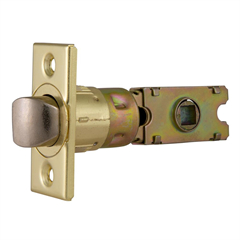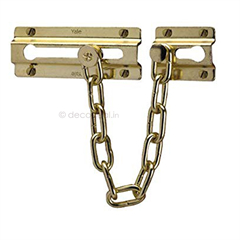Childproofing door handles is crucial to ensure the safety and well-being of young children. Here are some tips to help you childproof door handles effectively:
1. Door Handle Covers:
- Use door handle covers or locks specifically designed to prevent children from opening doors. These covers are typically difficult for children to manipulate but can be easily operated by adults.
2. Childproof Locks:
- Install childproof locks on doors that you want to restrict access to. These locks are often mounted higher up on the door, making them out of reach for children.
3. Lever Handle Locks:
- If your doors have lever handles, consider using lever handle locks. These locks prevent the lever from being depressed, making it harder for a child to turn the handle and open the door.
4. Door Knob Covers:
- Door knob covers can prevent children from gripping and turning the knob. Choose covers that require dexterity and strength beyond a child’s capabilities.
5. Sliding Bolt Locks:
- Install sliding bolt locks high on doors to keep children from accessing certain areas. These locks are usually easy for adults to operate with one hand.
6. Magnetic Locks:
- Magnetic locks can be installed inside cabinets, closets, or doors and require a magnetic key to open. These locks can provide a secure barrier against curious little hands.
7. Visual Deterrents:
- Use visual deterrents such as colorful tape, stickers, or signs to remind children not to open specific doors.
8. Teaching Boundaries:
- Teach your child about door safety and boundaries. Explain which doors they are allowed to open and which ones are off-limits. Reiterate the importance of not opening doors without adult supervision.
9. Supervision and Education:
- Always supervise young children around doors and educate them about potential dangers, such as going outside unattended or entering areas with potential hazards.
10. Regular Maintenance:
- Regularly check the functionality of your childproofing devices and locks. Children grow quickly, and what may have been effective last year might not be sufficient now.
11. Emergency Access:
- Ensure that adults can quickly access the childproofed areas in case of an emergency. Practice opening the childproof locks or covers so that you are familiar with their operation.
12. Consistency:
- Be consistent in your approach to childproofing. Make sure that all caregivers, family members, and visitors are aware of the childproofing measures you’ve implemented.
Remember that childproofing measures are meant to provide an extra layer of safety, but they don’t replace vigilant supervision. Regularly assess your child’s development and adjust childproofing measures accordingly as they grow and gain new skills.








